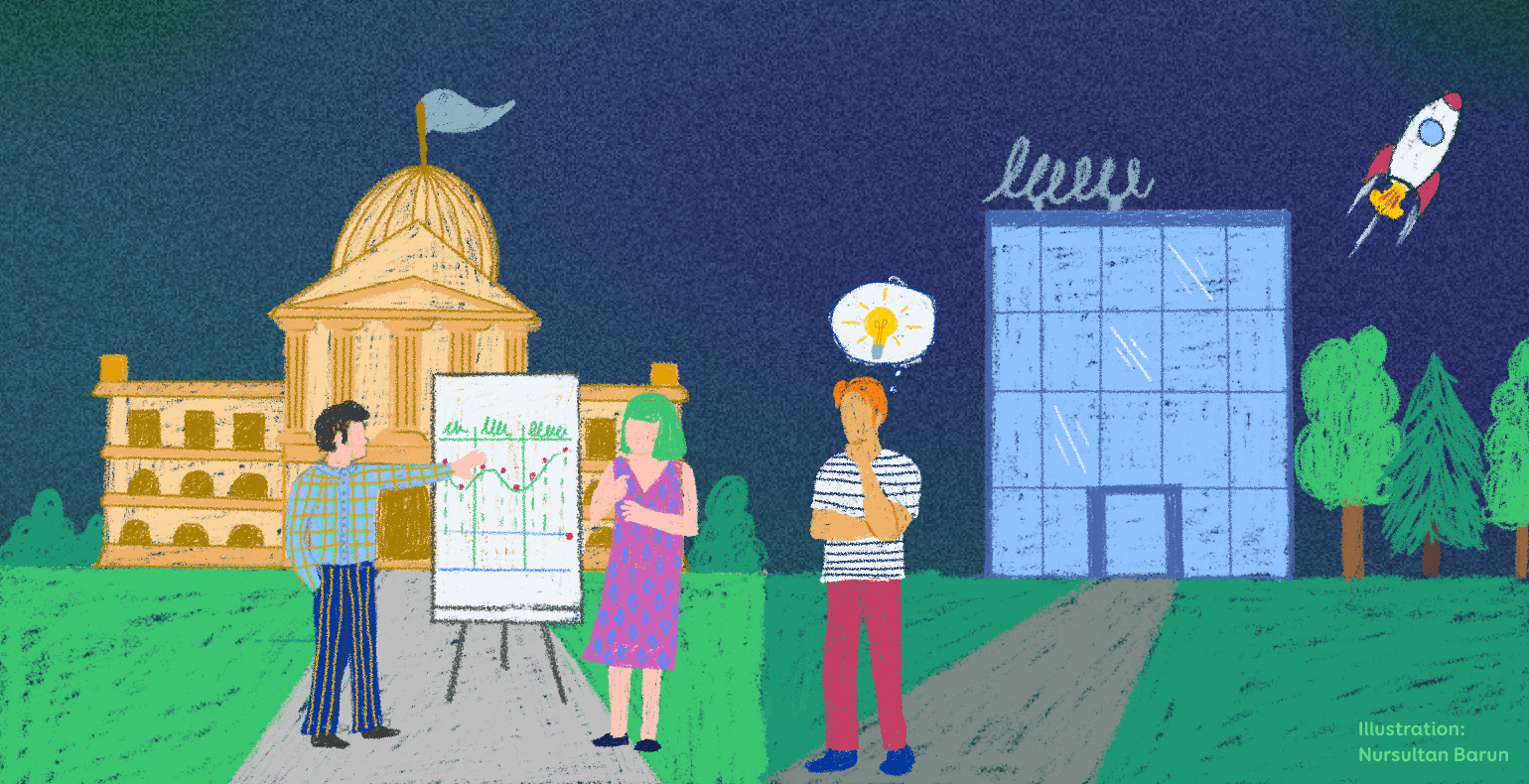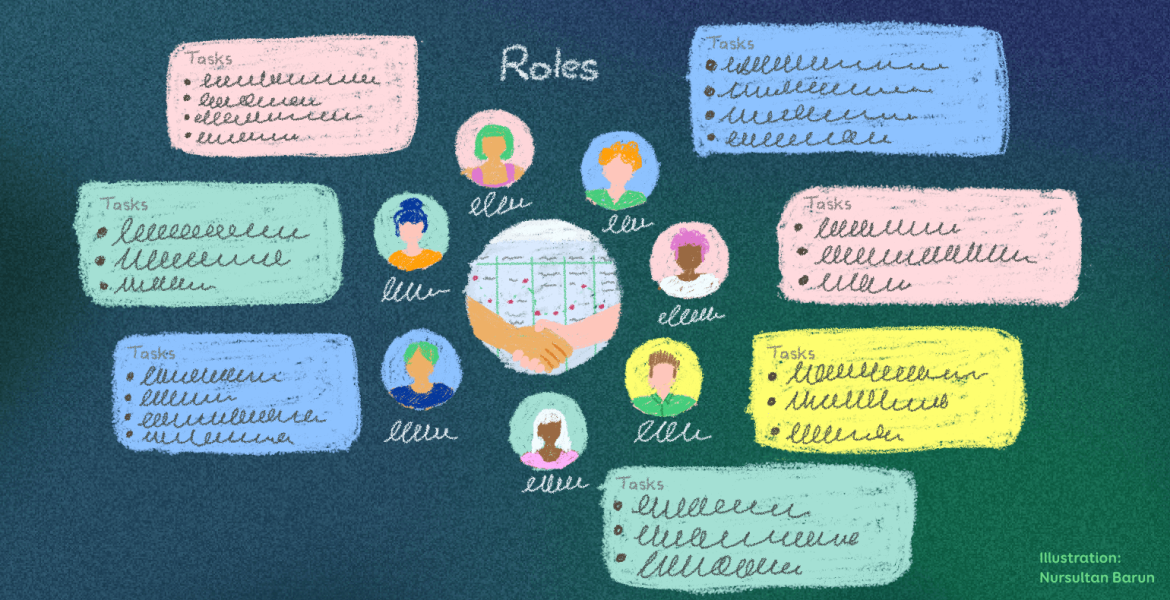What can the private sector learn from the public sector in service design?
It's a common belief that the private sector can turn user needs into services more quickly and effectively. Trinidad Wiseman's projects have a balanced distribution between the private and public sectors.
Despite the private sector's innovation, efficiency, and flexibility, which are crucial for expanding the impact of service design and implementing changes, our service designers have often found that the most successful service design projects come from the public sector.
Why is this, and what can the private sector learn from the public sector? We share our observations on similarities, differences, and lessons that both sectors can reflect upon.
A systematic approach leads to success
Isn't it a common scenario in the private sector where they expect concrete outcomes from a project within six months? This includes understanding user requirements, creating a prototype, testing it, developing, launching, and already having quantifiable results.
This methodology leans more towards a "fail fast" tactic than delving deep into research. It may bypass thoroughly studying target audiences, discerning their needs, crafting a compelling value proposition, and strategising customer engagement.
However, there are moments when the "jump-right-in" strategy is the most apt. Experimentation often gives birth to bold and innovative solutions. The agility of the private sector ensures that things happen, feedback is quick, and lessons can be learnt.
However, there are times when in-depth analysis works better, especially when making significant changes to existing services or creating entirely new ones requiring substantial adaptations.
Within the public sector, there's a prevailing sentiment, frequently backed by valid requirements, that their initiatives need rigorous validation. Especially when projects seek external funding, there's an imperative to underpin decisions with comprehensive studies and feedback loops.
Failing to do so could either lead to a withdrawal of funds or a call-back for reimbursements. While this rigorous approach enforces accountability and high-quality standards, it also filters out many superfluous solutions, narrowing the focus to essential undertakings.
Good services are born with an open mind
In the private sector, there's often a preconceived notion of what the solution should look like. The race against competitors leads to hasty (sometimes ill-considered) solutions that might seem the norm (e.g., an app because competitors have one). However, this might not always align with the target audience's needs and expectations.
Sometimes, those starting projects are sure that a product or service is needed, thinking it fits the business and is easily implementable by the company. Because of this, they might overlook what a service design review or user testing shows.
Big companies with many services, systems, and roles might find that things drag on instead of quick tests and learning from mistakes, and people start blaming each other. Existing processes might not always support enthusiasm from small teams, or there might be none at all, impeding creativity. Consequently, desired lessons are missed, and the service remains undeveloped.
In recent times, the public sector has adopted service design more frequently. This shift prioritises understanding individual needs when developing government and local services. Several guidelines have emerged, and service design specialists have joined the sector.
First-hand experience has bolstered trust, affirming the effectiveness of service design methods. Joint projects, training sessions, and knowledge exchanges have amplified awareness, leading to a growing number of service design proponents within the public sector.
Service design is gaining traction nationally. Some examples are:
- the Innovation Team at the State Chancellery wants to make Estonian public services easier for people to use
- there's a toolkit for designing public services
- there's a canvas for developing public services
- and a guide to trying out new ideas in the public sector
The above links provide valuable insights for private sector initiatives as well. Drawing from Trinidad Wiseman's experience, a good example is the design sprint project for relocating to Estonia. A program manager who underwent an innovation sprint wanted to apply experimental, user-inclusive methods in event service development.
This would achieve a working solution faster than conventional public sector processes would allow. We found that detailed analysis has its time and place. Still, the client's open-mindedness and the inclusion of necessary partners and service owners enabled the creation of a minimally viable prototype and service concept within a five-day design sprint.
Belief in such approaches has brought numerous examples to the public sector, highlighting solutions-seeking rather than potential barriers.
Internal processes support user-centred service development and company operations
Sometimes it is easier to put out fires than take two steps back and think about solutions and processes to prevent them.
During the early stages of a service design review, we often spot many reasons why a service or product isn't doing well. These reasons usually relate to the way things are run inside the company. At times, it feels simpler not to face these issues – it seems easier to handle things as they come rather than change everything from the start.
But, for service designers to do their job, they need to see everything – the good and the bad – from the client's view and the company's inner workings. It's crucial to lay out all problems and concerns. That way, when designing a new system, you know everything's been considered.
We know things aren't always as clear-cut as guidelines suggest. We get that sometimes the focus is on sorting out immediate problems, and other things, like paperwork or processes, can get left behind.
In the public sector, we encounter less fear of getting into trouble. This might be because responsibility is shared. So, decisions follow general rules, and one person in charge has less say in them.
The service design project's mandate, roles, and responsibilities are clearly defined
Every organisation that orders service design must be prepared for a shake-up, as this process often leads to a rethinking of the company's strategy.
Undoubtedly, this means that the management must be the "good fairy" of the service design process and the mandate giver for changes - a middle manager or an energetic marketing team may not be the one who knows, dares, or is influential enough to convey the need for company-wide changes to the leaders and articulate it as business goals.
In private companies, there often aren't roles that tie together service design, thinking of the customer, and business goals. Ideas usually come from a few passionate people. But if the whole team isn't on board, the plan is lopsided. This makes offering and using the service a bit chaotic because there's no clear path or way to handle changes.
In the public sector, we more often encounter a supportive organisational structure as a prerequisite for implementing a user-centric approach, meaning that a product owner has been assigned to the service, for whom the benefits of service design are very clear and part of their tasks.
Do it yourself or involve a professional partner, but the main thing is to act
Service design is not something to do when you have leftover time and money. The new norm should be to focus on how to be customer-centric, what changes it requires from you, how it relates to today's business goals, and what it means for every person in their daily work.
Service design isn't overly complex, and a dedicated in-house team can manage. Still, sometimes an outsider can ask the hard questions. Look at our earlier post, "Why bring in a service designer for the project?"
Start by asking yourself: are you up for significant changes, not just tweaks to looks and products? With that mindset, service designers can guide you to make user-focused thinking feel like a welcome challenge rather than feeling picked on. Remember, courage pays off!








